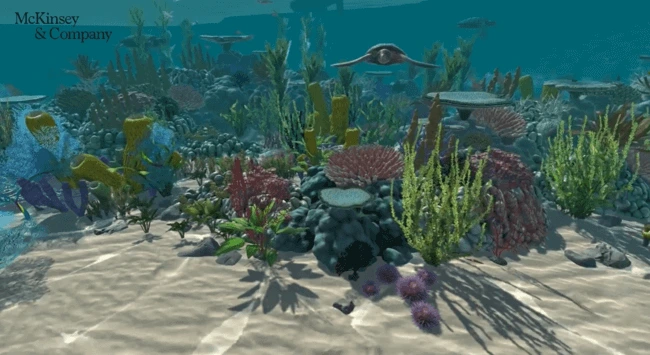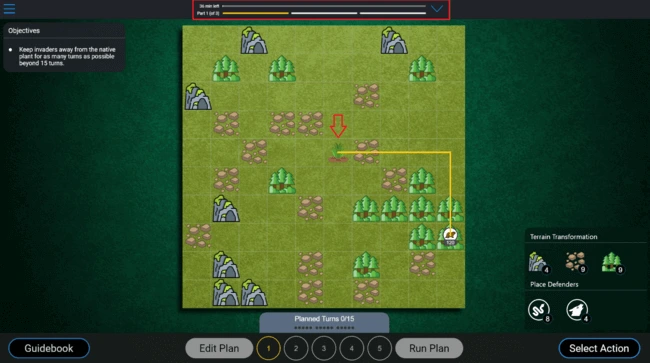The McKinsey PSG is a unique hiring procedure that replaces the paper-based McKinsey Problem-Solving Test. But learning the rules of the game is just the beginning of what’s required to succeed on this one-of-a-kind examination.
This article will give you a complete and detailed strategic plan for studying for the McKinsey PSG and some tips for your test day.
A quick overview of the McKinsey PSG
The McKinsey Problem-solving game’s structure
The McKinsey PSG is confirmed to have 6 mini-games:
- Ecosystem Building: constructing an ecosystem in a defined area while taking into account a number of different factors.
- Plant Defense: Utilizing predators to defend a rare plant from animals
- Disaster Management: recognizing when a natural disaster will affect a particular environment and taking action to protect that ecosystem.
- Disease Management: diagnosing infectious diseases, understanding their transmission mechanisms, and estimating their spread within an ecosystem
- Migration Management: guiding a group of animals from one location to another while losing the least amount of animals possible
- Redrock Study: reviewing primary goals and addressing concerns of a business by analyzing data and clarifying the research results through visuals.
Candidates are required to solve 2 out of these 6 mini-games. The total time allotted to finish both games is 71 minutes, which also covers the time needed to read the instructions.
McKinsey digital assessment’s marking criteria
Each candidate will be evaluated based on both product score (i.e., the final results) and process score (i.e., the methods to arrive at those results).
Product scores are determined based on how successfully you complete the goals of the game’s situations. Although there is no one right response, certain alternatives will be preferable. Product score is the most obvious component to improve via repeated practice.
On the other hand, process scores are determined using information about your tactical approach during the whole game; each keypress, click, and mouse movement will be examined.
Test-takers should interpret every movement on the screen as reflecting their method of handling an issue. Thus, having a well-thought-out plan from the start is the optimal method to maximize the process scores.
McKinsey Problem-solving Game Study Tips & Tricks
Understand the reasoning behind each type of mini-game
Ecosystem building
At its core, “Ecosystem Building” is a problem of how to best use resources. The objective is to construct a “sustainable” ecosystem. To do this, you must match the species’ living circumstances with those of the selected site and ensure that each species has enough food to thrive.
You need to take into account several characteristics of the location to create living conditions suitable for the 8 different species you chose. The most important reminder here is that your food chain is more likely to survive if each species consumes less and produces more. So you should favor species with a high caloric supply and a low caloric requirement.

Plant Defense
Plant Defense is a game of probability. The map comprises a grid of tiny squares, with each piece occupying a single square. The plant is positioned on the square in the center of the map; therefore, all intruders must cross at least one of the eight surrounding squares to access it. So, you should prepare your defense from the inside out. Expand from the circle around the plant.

Disease Management
The player’s objective is to predict which animals on the map will contract a specific sickness. What matters most in this game is identifying disease patterns and determining which animals will be afflicted in the following turn.
The strategy for this game is rather straightforward.
- Identify the important factors that might offer a clue about the course of the disease.
- Make some different filters and look at them at different times to see how the animal population has changed.
- Based on your tested hypotheses from step 2, choose the next animals affected by the disease.
Disaster Management
Candidates had to determine the type of natural disaster affecting an animal colony to relocate the animals to a different region of the map where they would have the best chance of surviving.
There are 3 steps to approach the game:
- Determine the event that occurred in a location by mixing data from an event description with on-screen variables.
- Find dominant ranges to relocate the animals to
- Check if any of the relevant ranges you previously identified are present. Give the qualities that will help the most animals survive top priority.
Migration Management
In this game, your job is to guide animals as they move from one place to another. The game’s mechanics let you travel to areas where you’ll find food, water, and other supplies necessary to keep the animals alive, as well as additional animals to care for.
Once you know how the game works, it’s easy to figure out how to play: choose the option that provides the greatest number of animals while still allowing you to maintain a sustainable population.
Redrock Study
This minigame will resemble a more traditional business-like and analytical game environment. In this game, you are in the role of a “researcher”, and your objectives are similar to that of a typical consultant.
The most important step is gathering information. Refer to the assessment’s context, statistics, and timelines instructions. You will need to answer roughly 10 questions by filling in the blanks, so practice time management and note-taking skills. However, since this game is new, brace yourself for minor differences in the test.
Train your test-taking skills
The PSG tests you on five core cognitive skills, but we recommend that you train yourself on these three skills as they will help improve your performance: speed reading, mental math, and data selection.
Speed reading
If you want to succeed in McKinsey’s PSG, you’ll need to learn to quickly process a massive amount of data. Fast reading abilities come in handy for this test and can speed up the process of comprehending the many rules of the mini-games.
Mental math
Time is of the essence on the PSG, so being able to do quick mental math calculations will be a huge help.
Plant Defense is an example. Each defender deals a certain amount of damage per turn, and each invader has a certain population, or what PSG refers to as “health points.” The only way to know if your defenders can wipe out the invading force is to tally the damage, extract the population that survived, and compare the two numbers.

Data selection
Don’t spend too much time trying to comprehend all of the data displayed in the game. You can safely ignore some details without affecting your results. Other data will be relevant but not crucial. Consider how much weight different pieces of information have on your choices and spend more time on those.
When there is little information, concentrate on the essential facts, disregard the non-important ones, and guess as best you can. You can avoid getting sucked into unimportant details by prioritizing your objectives and keeping the big picture in mind.
Keep in mind the abilities being tested
The Solve test assesses candidates on five core skills: critical thinking, decision-making, metacognition, situational awareness, and systems thinking.
- Critical thinking: the ability to dissect issues and find solutions
- Decision-making: the ability to take in a lot of data, sort through it, and come up with the best possible choice in a short period of time
- Metacognition: the ability to keep track of and improve your own mental processes.
- Situational awareness: the ability to keep track of multiple tasks or activities at once
- Systems thinking: the ability to identify the underlying causes of issues and potential solutions
During the game, pay attention to how you’re doing in those areas and make deliberate decisions that highlight those abilities.
Practice with similar games
Test-takers with prior experience in video gaming, particularly strategy games, have a considerable edge because of their “game awareness.” The essential skills to solve the PSG are improved by playing video games with data processing and system administration. A game is better for practice the more it resembles PSG.
There are a few prominent video game genres that the McKinsey PSG is very similar to in terms of logic and playability. For games similar to the “Ecosystem Building,” you could check out the SimCity, Ceasar, or Anno series; and for the “Plant Defense,” Kingdom Rush and Plant vs. Zombies are great series to practice with.

Get ready for the test day
Check your system before the test
The PSG is a series of online 3D games which puts a lot of strain on your computer and the Internet bandwidth. If your setup fails you in the middle of a test, you’re unlikely to receive another opportunity, and you’ll have to bid goodbye to your McKinsey career for the time being.
To determine whether your Internet connection is steady, use Speedtest (at least 30Mbps).
If not, you should improve your Internet subscription or take the test somewhere else with better equipment and Internet access.
Take notes with pen and paper
Pen and paper drafting is often quicker and much more versatile. Maps, charts, and issue trees may all be easily drawn for improved visualization. Additionally, you can start again much more quickly if you decide to throw out what you’ve written.
Online note-taking would require frequent tab/window shifting. Your ability to focus may be affected, which will make double-checking more difficult. In the worst-case scenario, you may unintentionally close a window. So avoid having any background program running and use the traditional way of taking notes.

Don’t be a perfectionist
This tip is to help you prepare your mindset before taking an exam. Finishing the game on time is more crucial than taking too much time to improve your performance in the opening stages significantly.
It’s fine if you lack some of the information required to make a fully accurate judgment. Some PSG mini-games purposefully put players in these circumstances to gauge how they could react in situations similar to this in the real world.
Examples include the Plant Defense mini-game, in which you cannot predict when and from where the attackers will arrive, or the Migration mini-game, in which you cannot predict how many resources or animals will be available at each checkpoint.
That was a complete guide to the McKinsey PSG. If you want to find out more, experience the game for yourself!
